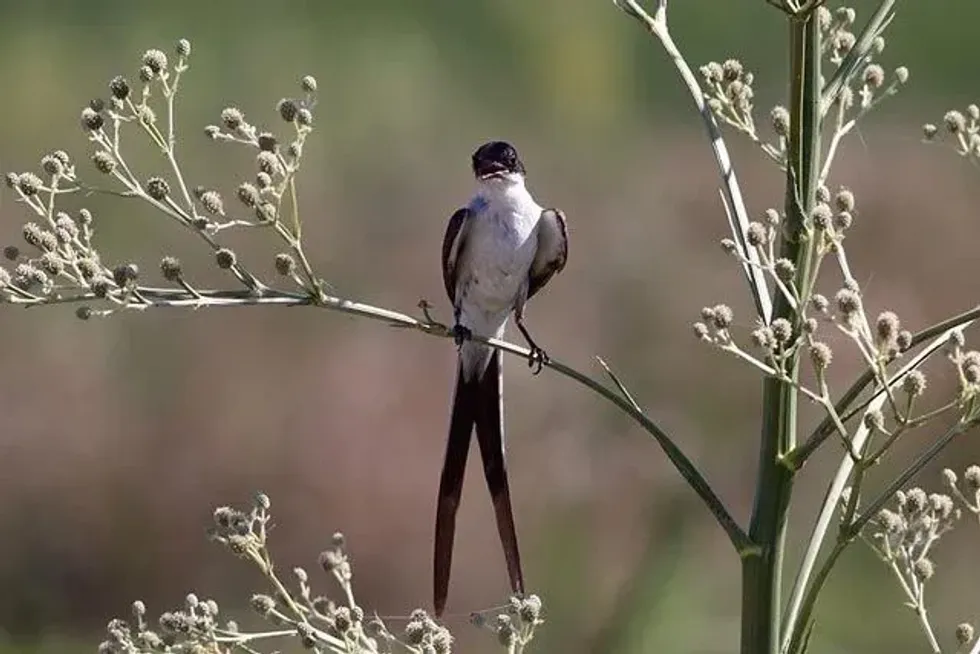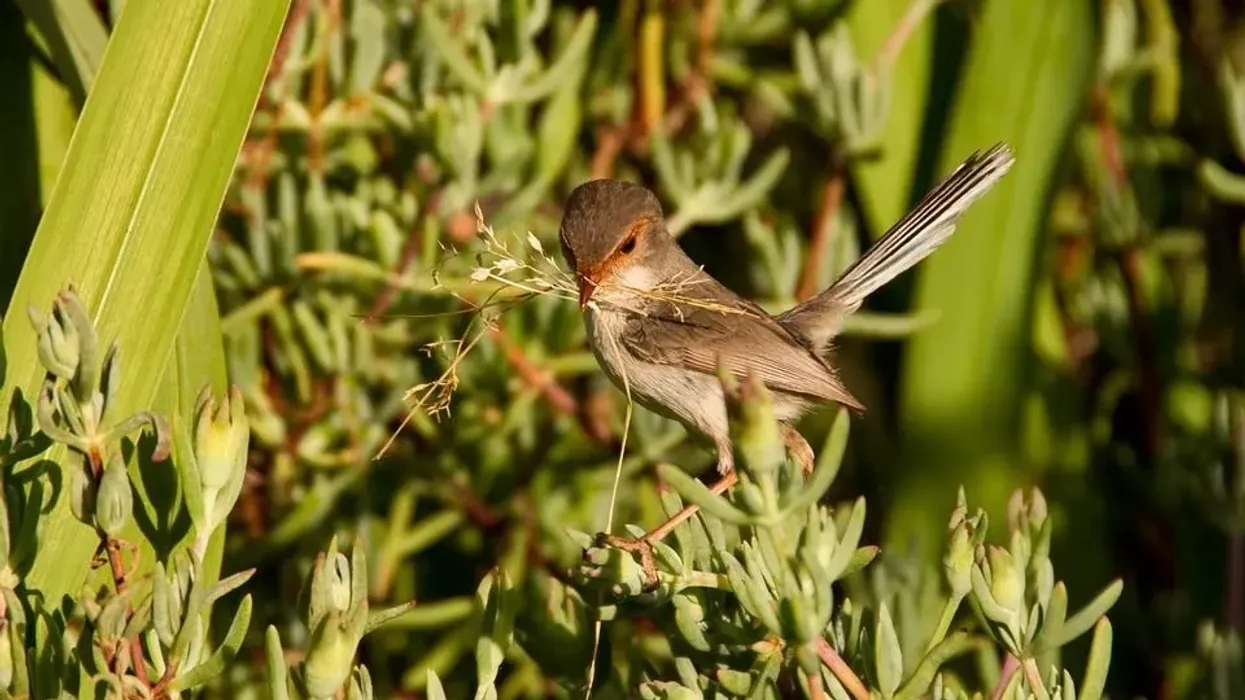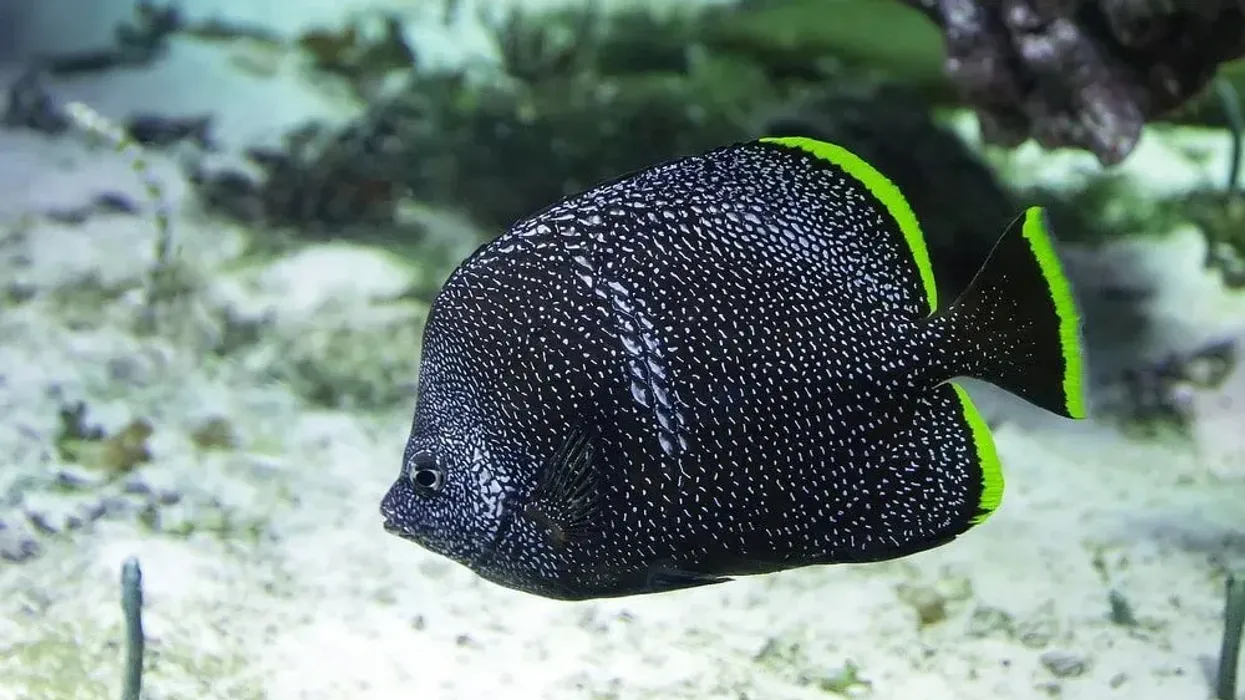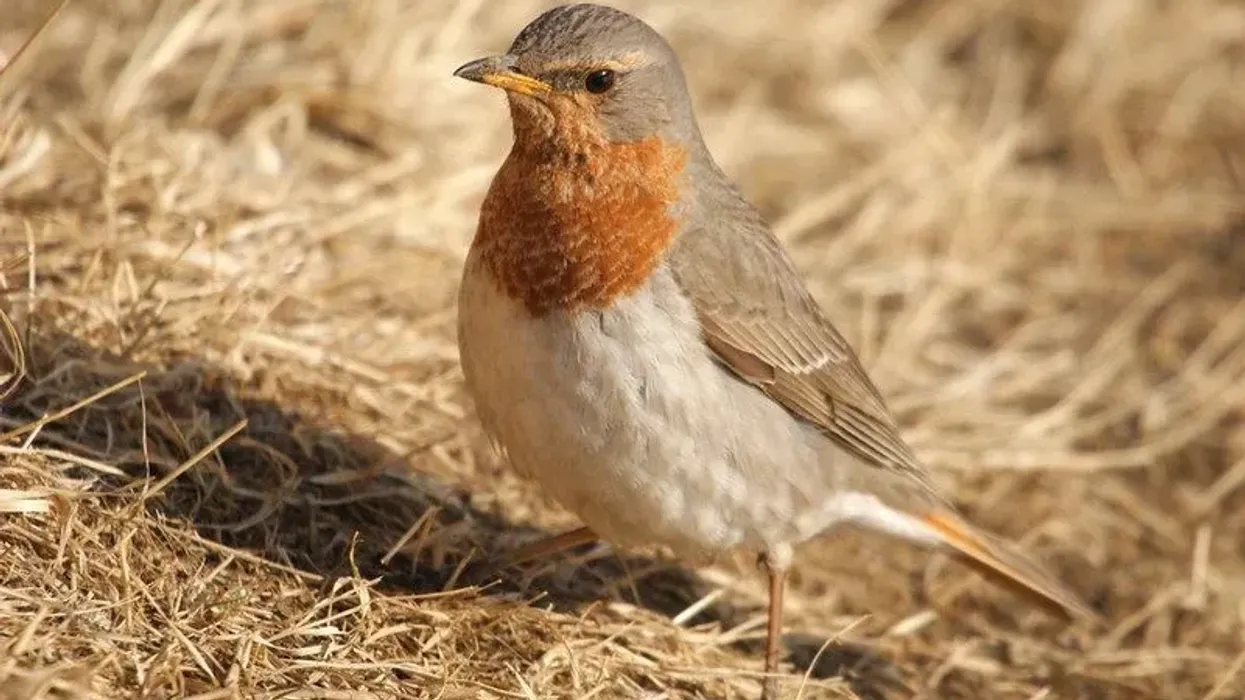The fork-tailed flycatcher (Tyrannus savana) belongs to the order Passeriformes and Tyrannidae family. These birds are native to southern Mexico, Argentina, and Brazil in South America, and regions of North America and Central America.
They migrate two times a year from their habitats which are called fall migration and spring migration. These birds have a habit of wandering far north from their habitats, and can go as far north as eastern America. This species has an extremely long forked tail that is a distinct feature of these birds.
This bird species has steady populations in all of its habitat regions. The fork-tailed flycatcher is also known as the scissor-tailed flycatcher.
Here are some of the most fascinating facts about the fork-tailed flycatcher (Tyrannus savana). For more relatable content, check out these birds of paradise facts and keel-billed toucan facts for kids.
Fork-Tailed Flycatcher Interesting Facts
What type of animal is a fork-tailed flycatcher?
The fork-tailed flycatcher (Tyrannus savana) is a migratory bird. Scissor-tailed flycatchers are a species that have a very long tail, probably one of the longest in the flycatcher family.
What class of animal does a fork-tailed flycatcher belong to?
The fork-tailed flycatcher (Tyrannus savana) belongs to the Aves class of animals. Scissor-tailed flycatchers are a member of the Tyrannidae family and order Passeriformes.
How many fork-tailed flycatchers are there in the world?
Fork-tailed flycatchers have stable population levels across their range of habitats in South America, North America, and Central America. The exact population of fork-tailed flycatchers in the world is yet unknown.
Where does a fork-tailed flycatcher live?
A fork-tailed flycatcher (Tyrannus savana), a member of the Tyrannidae family, lives in grasslands and scattered human habitats in their native regions of South America, North America, and Central America. Their populations are spread across a wide geographical region across their range of habitat. Some of the populations in South America are highly migratory.
What is a fork-tailed flycatcher's habitat?
A fork-tailed flycatcher bird lives in a wide range of habitats across South America, North America, and Central America. These migratory birds are found in forests, grasslands, forest edges, mangroves, pastures, and bushes. The scissor-tailed flycatcher species is also found near human settlements with scattered trees.
They like to perch on tall forest trees as well as build their nests on such trees. Their nests are shaped like a cup. The scissor-tailed flycatcher bird species stays below the heights of 3,281 ft (1,000 m) above sea level.
Who do fork-tailed flycatchers live with?
The fork-tailed flycatcher lives in huge flocks with birds of the same species. These birds of North America are found in groups of up to 10,000 individuals in the regions of South America, North America, and Central America.
Some of the populations of these flycatchers in South America are highly migratory and it is quite common to spot them far away from their natural habitat.
How long does a fork-tailed flycatcher live?
A fork-tailed flycatcher has a lifespan of medium length. They can live for five to 10 years across their range of habitats.
How do they reproduce?
The breeding season of the fork-tailed flycatcher is from late summer to mid-winter, to the north of Mexico. In the breeding season, the males do aerial displays and show off their long tail feathers. These birds make buzzing calls along with displays to impress the females.
Females choose the males based on their courtship displays. The females lay their eggs in winter in cup-shaped nests. There are usually one to three eggs in a clutch.
What is their conservation status?
The conservation status of a fork-tailed flycatcher (Tyrannus savana) is that of Least Concern on the IUCN Red List as their population is stable across the range of habitat. Their populations in the north of Mexico are safe and require no conservation.
Fork-Tailed Flycatcher Fun Facts
What do fork-tailed flycatchers look like?
The fork-tailed flycatcher has a gray plumage. Their undersides are white in color and the upper side gray. They have a black head which is also a bit small.
The tail of these birds is extremely long forked, even longer than scissor-tailed flycatchers. The tails of the females are shorter than the males. The tails of adult birds are two to three times their body length.
How cute are they?
The scissor-tailed flycatcher of the Tyrannidae family are very cute birds. Their long tail is a very distinctive feature that looks very beautiful. The way these flycatchers expertly catch insects on their wings with sharp mid-air twists and turns looks absolutely majestic.
How do they communicate?
The scissor-tailed flycatcher uses their vocals for communication. Their wings make distinct sounds that are used by this species of birds to exchange information. The sound of their wings is the primary source of communication for this bird species.
How big is a fork-tailed flycatcher?
A fork-tailed flycatcher is a small species of bird. The males have longer tails than the females which is why the length of the males lies in the range of 14.5-16 in (36.8-40.6 cm) and that of females in the range of 11-11.8 in (28-30 cm).
The length of the wingspan is capped at a range of around 5.9 in (15 cm). The fork-tailed flycatcher is two times bigger than a seaside sparrow.
How fast can a fork-tailed flycatcher fly?
A fork-tailed flycatcher is one of the fastest birds. Their long tail feathers give them an edge in their flight. This bird species can fly as fast as 65 mph (104.6 kph). They suddenly sally while perching on trees and expertly catch insects with sharp twists and turns in the air.
How much does a fork-tailed flycatcher weigh?
A fork-tailed flycatcher (Tyrannus savana) is a small-sized bird. It weighs in the range of 1-1.1 oz (28.3-31.2 g).
What are their male and female names of the species?
The males of the fork-tailed flycatcher species are called cocks and the females of the fork-tailed flycatcher species are called hens. In common parlance, they are known as males and females as well.
What would you call a baby fork-tailed flycatcher?
A baby fork-tailed flycatcher is called a chick.
What do they eat?
Fork-tailed flycatchers are omnivorous birds in terms of their diet behavior. Most commonly, their diet includes insects, but during the winters as insects start to become scarce, they eat small fruits and berries along with insects.
They catch insects by sallying from their perch where they sit quietly till they spot their prey. After catching the prey, they return to the perch to eat it.
Are they dangerous?
The fork-tailed flycatcher is not dangerous for humans and has generally peaceful behavior. They do not voluntarily attack unless provoked. They cannot cause much harm even if they attack due to their small size and weight.
Would they make a good pet?
Fork-tailed flycatchers are wild birds who like to fly around freely and catch their prey in flight. Even though they are found living near human settlements, they are not friendly towards humans. They do not bode well in captivity. They have a habit of living in large groups which makes it difficult for them to live alone with humans.
Did you know...
The members of the genus of the fork-tailed flycatcher are called kingbirds.
Apart from this bird species, the swallow-tailed kite is another bird that also has a long forked tail.
This bird species is endemic to South America, Central America, and Mexico.
The most special feature of the fork-tailed flycatcher is the long forked tail.
Is the scissor-tailed flycatcher endangered?
The scissor-tailed flycatcher comes under the Least Concern category, according to the IUCN Red List. Scissor-tailed flycatchers are not endangered, but their population has been decreasing due to habitat loss.
Do fork-tailed flycatchers hover?
The fork-tailed flycatcher has flying habits similar to that of hummingbirds. They take short flights to flowers. They hover at a place to collect berries before flying away.
Here at Kidadl, we have carefully created lots of interesting family-friendly animal facts for everyone to discover! Learn more about some other birds from our jacana facts and royal penguin facts pages.
You can even occupy yourself at home by coloring in one of our free printable fork-tailed flycatchers coloring pages.









